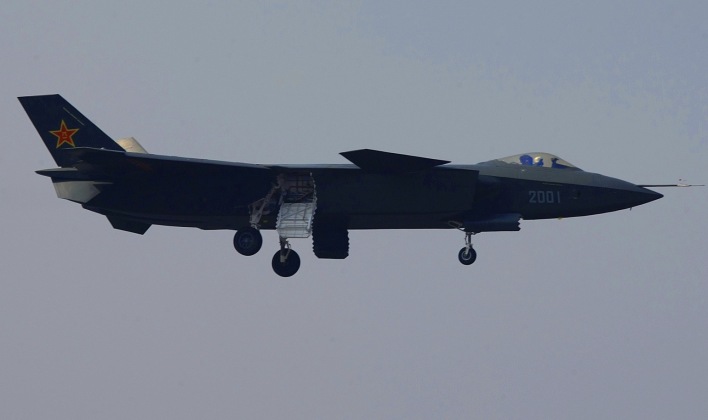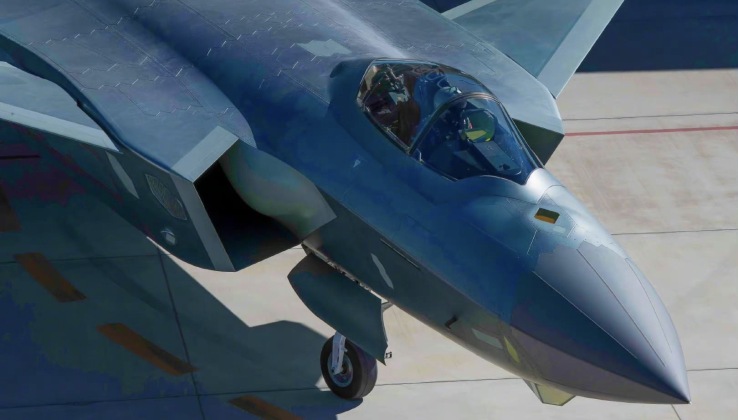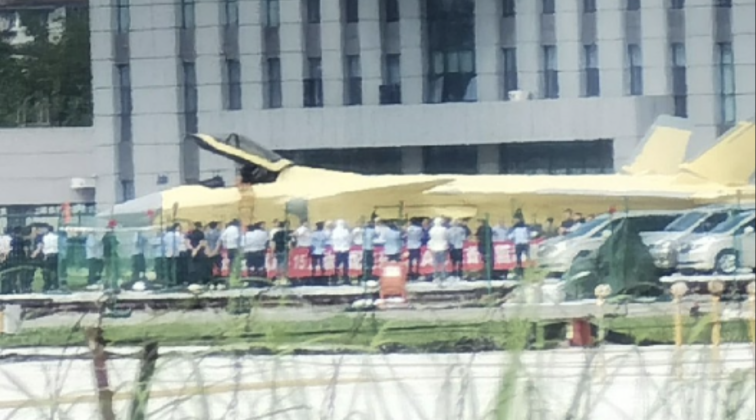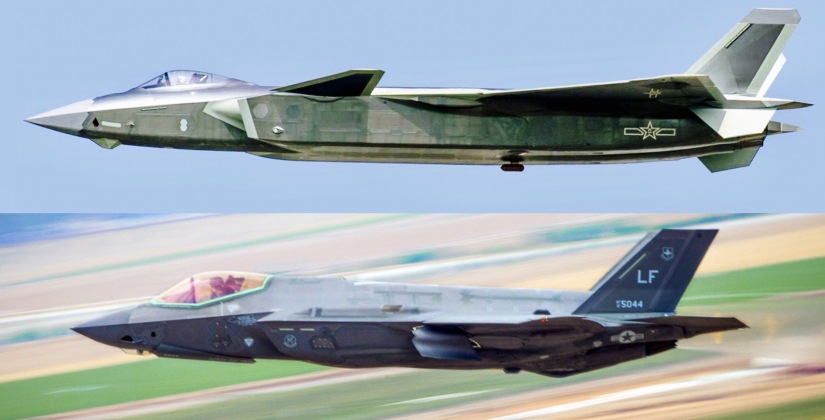
The Chengdu Aircraft Industry Group has reportedly surged production of its J-20 fifth generation fighter to over 120 per year, accordingly to multiple reliable sources in both China and the West. Production was previously estimated at between 40 and 50 airframes per year, but reports of new production rates are supported by previous assessments of the accelerated rates at which new units have been receiving the fighters. With over 200 J-20s thought to have already been in service at the beginning of the year, five air brigades have been reported to have received the aircraft in the first half of 2023 alone. These have included the 55th Air Brigade based at Jining, which has been confirmed, as well as the 131st Air Brigade based at Nanning, the 98th Air Brigade at Chongqing, the 95th Air Brigade at Lianyungang and the 97th Air Brigade at Dazu. If confirmed these units’ conversion would strongly support reports that deliveries are occurring at several times the rates seen in previous years.

The J-20 is one of just two fifth generation fighters in the world both in production and fielded at squadron level strength alongside the American F-35. Where the F-35 is a much lighter single engine fighter designed primarily for air to surface roles, however, the J-20 is a heavyweight twin engine fighter well suited to air-to-air combat. It is broadly equivalent to the American F-22 Raptor which, due to a range of issues, ended its brief production run in 2011 and is expected to begin seeing airframes retired from service in 2023 or 2024. The F-22’s avionics are significantly behind those of the J-20 and F-35, with key features such as distributed aperture systems and helmet mounted sights notably not installed while its ability to network with other aircraft, a vital capability for 21st century warfare, is relatively limited. The J-20 and the F-35 had their first encounter confirmed in March 2022 over the East China Sea, with the Chinese aircraft increasingly deployed for maritime patrols that year. The Chinese aircraft has the advantage of a much higher speed, altitude ceiling, and climb rate, a supercruise capability, much greater manoeuvrability and a much larger radar and missile arsenal than the F-35, as well as longer ranged air to air missiles in both the visual and beyond visual range classes. This engagement range advantage is further increased by the higher altitudes from which the fighter can operate when firing on its targets.

J-20 Fifth Generation Fighter
Production at over 120 airframes per year would put the Chinese People’s Liberation Army (PLA) Air Force entirely in a league of its own in terms of the rate at which it can convert to fielding fifth generation combat aircraft. To place it in perspective, the F-22 was previously expected to reach production of little over 60 airframes per year for a production run of 750 airframes – although when 75 percent of production numbers were cut production lines were never expanded to these levels. The F-35 has been produced at rates of little over 140 per year despite being a much smaller aircraft, with production targets currently at 156 per year which Lockheed Martin is reportedly struggling to reach. Not only is the F-35 much lighter, however, but it is being produced for over a dozen services across the world from the British Royal Navy to the Japanese Air Self Defence Force, where the J-20 is being produced for China’s air force exclusively. The U.S. Air Force, which is expected to continue receiving F-35s at a rate of approximately 48 per year at least until the middle of the decade, is thus very far surpassed by its Chinese counterpart in converting to fifth generation fighters with acquisitions at over 250 percent the rate. The U.S. Air Force was initially expected to acquire 110 F-35s per year, but wide ranging issues with the program and major cost overruns led it to scale this down to 80, then 60, and finally just 48 new airframes.

U.S. Air Force F-35A in J-20-Mimicking Colour Scheme For Adversary Training
The expansion of J-20 production comes as J-20 production has progressed towards manufacturing a new variant, the J-20B, which benefits from superior stealth capabilities and a new WS-15 engine for a much-improved performance. The WS-15 was first confirmed to be in serial production in March, and is expected to provide more thrust than any engine other than the F-35’s much larger F135. This will provide the J-20 with more thrust than any other fighter class due to its twin engine configuration. J-20 production notably expanded considerably when the fighter transitioned from stopgap derivatives of the Russian AL-31FM2 engine to the indigenous stopgap WS-10C engine, which was reportedly more reliable for maritime operations and could facilitate flight at low supersonic speeds without using fuel hungry afterburners. Further expansion of production closely coinciding with the WS-15’s expected service entry is thus in line with prevailing trends. With the J-20 having been announced in December 2021 to have entered full scale mass production, the accelerated rate of deliveries in early 2023 could well be the result of this and represent some of the last deliveries of the older WS-10C powered J-20A airframes.
J-20B with WS-15 Engines
Expanded J-20 production is one of the latest signs of China’s emergence as a leading player in combat aviation in a league of its own alongside the United States. To place J-20 acquisitions in further perspective the Russian Armed Forces, having fielded the world’s largest fighter fleet in the Soviet era, have acquired fighters from all the country’s four production classes combined at only around 50 airframes per year. It acquired them on such levels despite being the world’s third largest producer of fighter aircraft, despite focusing on much cheaper fourth generation aircraft, and in spite of needing to make up for an almost total lack of acquisitions in the 1990s and 2000s. Russia’s fifth generation fighter the Su-57, which is estimated to be far cheaper than the F-35 or the J-20, is expected to be produced at between 14 and 20 airframes per year in the latter half of the decade, with production lines having delivered just six serial production airframes in 2022 up from just two airframes in 2021. The Chinese and American fighter industries thus have no near peer competition.
J-20 (top) and F-35 Fifth Generation Fighters

For China the J-20 is not only being acquired on a totally unique scale, but is also being purchased in parallel with large orders for multiple other fighter classes, including in the near future expected acquisitions of FC-31 fifth generation fighters by the Navy. Despite exporting a very low proportion of its military equipment, China has long since surpassed the United States in its productive capacity for tanks, ships and fighters, which reflects broader discrepancies in civilian industrial capacity. American Office of Naval Intelligence reports recently highlighted, for example, the vast discrepancy in Chinese and American shipbuilding capacity with the former exceeding the latter 200 times over. New information regarding J-20 production thus indicates that it is well positioned to retain a comfortable lead in production of fifth generation fighters as well, while due to prevailing trends it is likely that this is a lead which America is highly unlikely to recover once lost.
